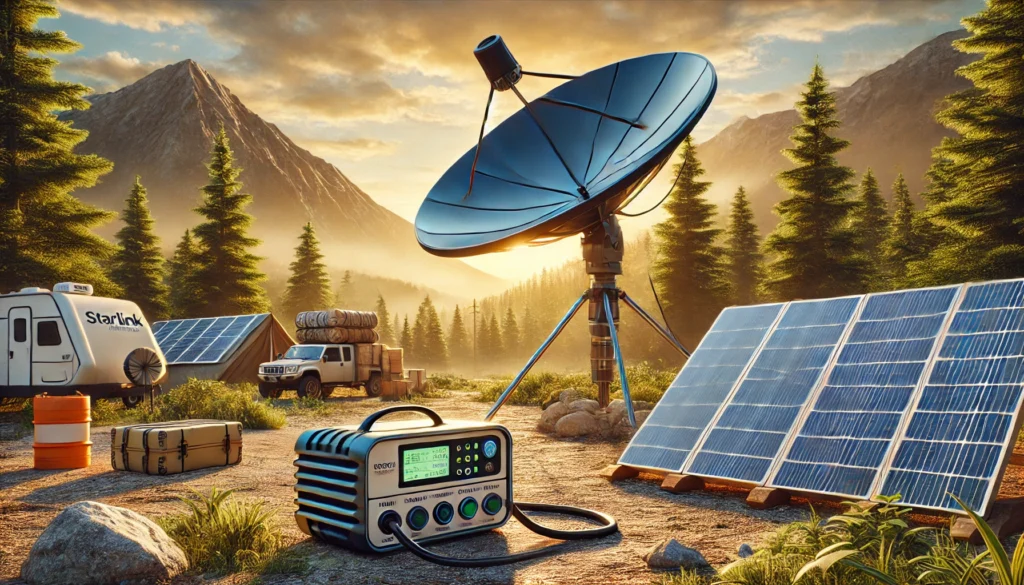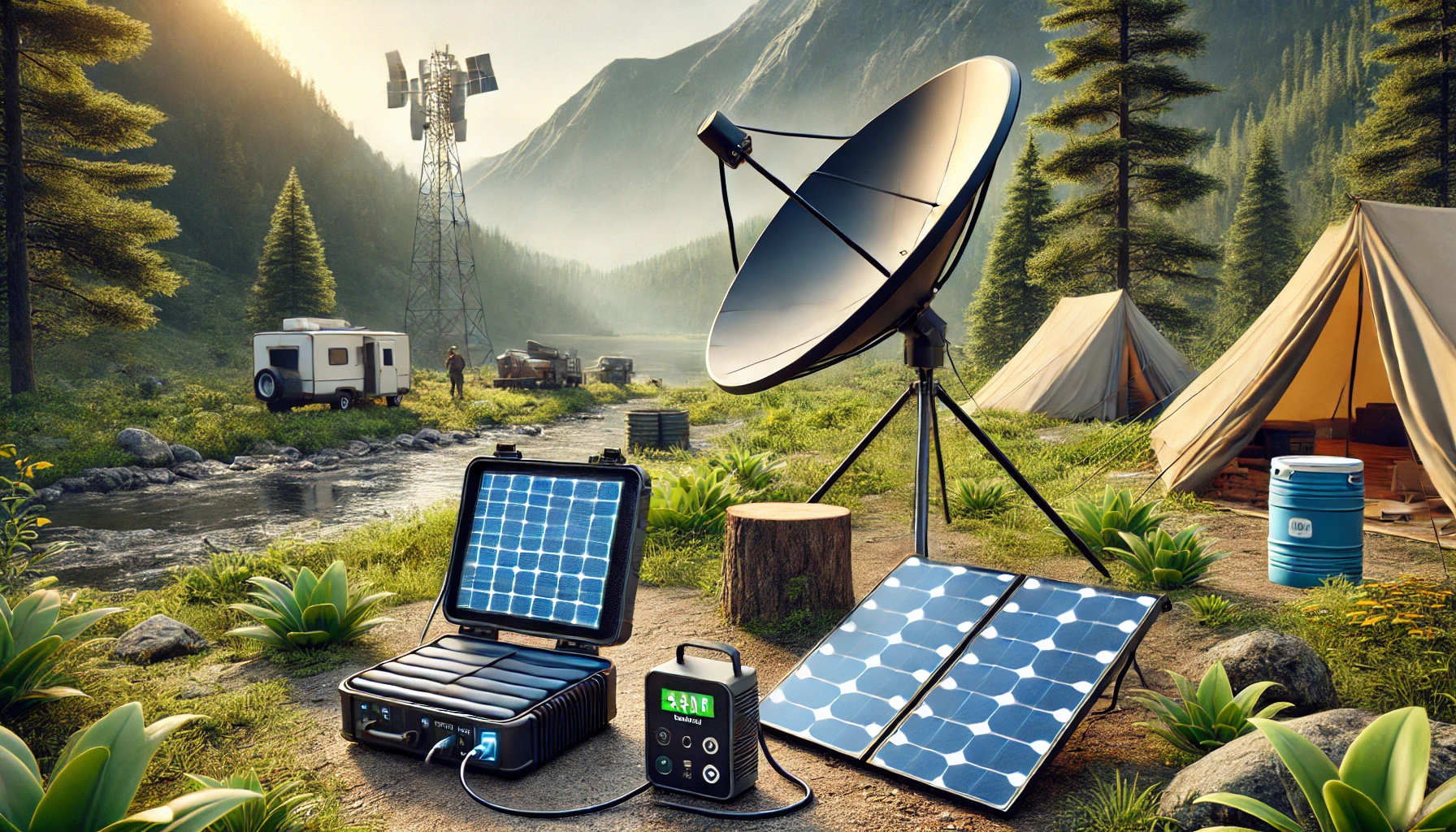
Accessing the internet in remote locations where electricity is unavailable can be challenging, but with the right equipment and planning, it’s possible to stay connected 24 hours a day. This guide will walk you through the steps, tools, and power solutions needed to ensure reliable internet access, whether you’re camping, exploring off-grid areas, or living in a remote location.
1. Choosing the Right Internet Device: Starlink Roam
- The best option for internet access in remote areas is Starlink Roam (formerly known as Starlink RV). This satellite internet system from SpaceX offers global coverage and is designed to provide high-speed internet access in remote or off-grid locations where traditional ISPs don’t reach.
- Starlink Roam is portable, easy to set up, and capable of operating with portable power sources, making it ideal for extended stays in areas without electricity.
2. Powering Your Internet Device for 24 Hours
- Power Consumption: Starlink Roam typically consumes between 50 to 75 watts of power. To keep it running for a full 24 hours, you need a portable power station with sufficient capacity. Here’s how you can set up a reliable power solution:
- Portable Power Stations: Devices like the EcoFlow Delta 3 Pro, Jackery Explorer 2000 Pro, or Anker PowerHouse 767 are ideal for this purpose. With capacities ranging from 2000 to 2048 watt-hours (Wh), these power stations can run Starlink Roam continuously for over 24 hours on a single charge. Additionally, they support fast charging and can be recharged using solar panels, making them perfect for off-grid environments.
- Solar Panels: To extend usage beyond 24 hours, consider pairing your power station with solar panels (e.g., 200W or higher). During the daytime, the solar panels can recharge the power station, ensuring uninterrupted internet access even if you are in a location with no access to electricity for an extended period.
3. Setting Up and Using the System
- Setup: Deploy the Starlink dish in an open area with a clear view of the sky for optimal connectivity. Use the Starlink app to locate the best position and ensure the satellite has an unobstructed line of sight.
- Connecting to the Power Station: Connect your Starlink Roam to the portable power station using its power cable. Ensure the power station is fully charged or connected to solar panels to maintain continuous operation.
4. Backup and Redundancy Plans
- In case of cloudy weather or insufficient sunlight for solar charging, keep an extra portable battery pack or another power station as a backup. This will allow you to swap power sources and continue using the internet without interruptions.
- Consider using a portable generator (if allowed) as an emergency power source, especially in extreme conditions where solar charging may be less effective.
5. Alternative Internet Solutions (If Starlink is Unavailable)
- Cellular Routers: If you have access to a strong cellular signal, using a cellular router like those offered by Netgear or TP-Link can be another option. These devices use SIM cards to provide internet access, though coverage and speed depend on the local network availability.
- Portable WiFi Hotspots: Some mobile carriers offer WiFi hotspots designed for remote use. Make sure to choose one that supports 4G or 5G networks for faster speeds.
6. Additional Tips for Staying Connected Off-Grid
- Optimize Power Usage: To maximize the power station’s efficiency, connect only essential devices (like your internet device) and minimize the use of other power-draining gadgets.
- Monitor Battery Levels: Regularly check the power station’s battery level using its display or app to ensure you have enough power. Reposition solar panels as needed to capture the most sunlight.
- Use Energy-Efficient Devices: If you plan to use other devices, such as laptops or smartphones, choose energy-efficient models that consume less power, allowing your power station to last longer.
Conclusion
Staying connected in remote locations without electricity is entirely possible with the right setup. Using Starlink Roam and a high-capacity portable power station, you can ensure 24-hour internet access. Pair these with solar panels for extended use, and keep backup power solutions on hand to stay online no matter where you are. With careful planning and the right equipment, accessing the internet in the most remote areas can be a seamless and reliable experience.
